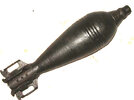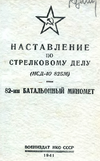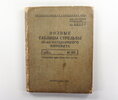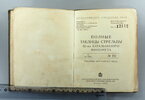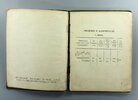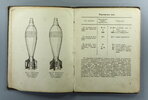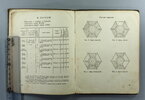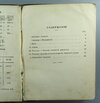British Ordnance Collectors Network
You are using an out of date browser. It may not display this or other websites correctly.
You should upgrade or use an alternative browser.
You should upgrade or use an alternative browser.
ID Russian round
- Thread starter MINENAZ16
- Start date
Found it, thank you.Mr Belot talks about a M-1 fuze on the 82 mm O-832 (French model) in his documents. I think you have te info.
Regards Chris
-In the 1920s, the so-called,, group D,, was established, which dealt with the construction of mortars and mines, among other things.
-In 1929, the Brandt mortar was introduced into the French army (according to Russian sources)
In 1929, Russia captured samples of the 81 mm Brandt mortar in the Russo-Chinese War.
In the period from 1930 to 1934, there were various projects and prototypes of mortars.
In 1930-1936, an 82 mm mortar was constructed on the principle of the "mine triangle", according to the idea of the French company Stockes-Brandt In 1936,
The first mines for this developmental mortar were produced in 1934.
the 82 mm mortar Mortar M 36 was introduced, then M 37 ...
-----------------------------------------------------------------------------------------------------------------------
Does anyone have a photo of a sample mine made in 1934 (Russian of course).
The first ammunition for the M.36 mortar with the M-1 fuze dated to 1934.?
Akon
-In 1929, the Brandt mortar was introduced into the French army (according to Russian sources)
In 1929, Russia captured samples of the 81 mm Brandt mortar in the Russo-Chinese War.
In the period from 1930 to 1934, there were various projects and prototypes of mortars.
In 1930-1936, an 82 mm mortar was constructed on the principle of the "mine triangle", according to the idea of the French company Stockes-Brandt In 1936,
The first mines for this developmental mortar were produced in 1934.
the 82 mm mortar Mortar M 36 was introduced, then M 37 ...
-----------------------------------------------------------------------------------------------------------------------
Does anyone have a photo of a sample mine made in 1934 (Russian of course).
The first ammunition for the M.36 mortar with the M-1 fuze dated to 1934.?
Akon
Last edited:
Eggburt1969
Well-Known Member
The earliest Soviet-era Russian manuals that I have, which have data within them on 82 mm mortar ammunition and their fuzes, both date from 1941.-In the 1920s, the so-called,, group D,, was established, which dealt with the construction of mortars and mines, among other things.
-In 1929, the Brandt mortar was introduced into the French army (according to Russian sources)
In 1929, Russia captured samples of the 81 mm Brandt mortar in the Russo-Chinese War.
In the period from 1930 to 1934, there were various projects and prototypes of mortars.
In 1930-1936, an 82 mm mortar was constructed on the principle of the "mine triangle", according to the idea of the French company Stockes-Brandt In 1936,
The first mines for this developmental mortar were produced in 1934.
the 82 mm mortar Mortar M 36 was introduced, then M 37 ...
-----------------------------------------------------------------------------------------------------------------------
Does anyone have a photo of a sample mine made in 1934 (Russian of course).
The first ammunition for the M.36 mortar with the M-1 fuze dated to 1934.?
Akon
A composite of two diagrams from within one of the 1941 publications, a presumed 53-O-832 bomb and its M-1 fuze, is below.
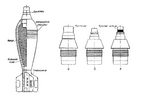
Hi sgdbr
There will definitely be a military regulation much older (around the year ? 1936).
Unfortunately I don't have a single source that contains a list of all issued regulations that the Red Army issued in every year since 1918 and certainly not additions and corrections.
Akon
There will definitely be a military regulation much older (around the year ? 1936).
Unfortunately I don't have a single source that contains a list of all issued regulations that the Red Army issued in every year since 1918 and certainly not additions and corrections.
Akon
Eggburt1969
Well-Known Member
Are you asking if it is this publication where the diagrams came from? I ask as there's no user name in your query, nor was the reply mode used.This one ?
View attachment 201426
If that was the question, then yes, the publication was from 1941 and titled 'Наставление по Стрелковому Делу (НСД-40 82БМ) 82-мм Батальонный Миномет'.
I do have a slightly older one, but that covers 50 and 82 mm mortars and the diagrams (of practice bombs) are more stylised and not very helpful.
I did try to get most Soviet-era Russian mortar manuals when I was rewriting all of the Jane's, then past their sell-by date (way out of date), entries. This covering the rewriting of mortar entries from 50-240 mm and their respective ammunition entries.
When looking I couldn't really find much before 1940. There's the odd older general details manual/guide/etc. on weapons and ammunition, which may have data in, but I've not checked them all.
Hi Eggburt 1969 .
You can't replace primary sources of information. If you don't want to fabricate .I searched for 82-мм БМ-36 and from cca 1936 and younger and also didn't find them.However, that doesn't mean they aren't .
---------------------------------------------
We're talking about original primary sources of information, not secondary sources, which Jane's, when it comes to Russia, undoubtedly is .
These are publications from this source in general.

Note that the mine marking is from 1936...
You can't replace primary sources of information. If you don't want to fabricate .I searched for 82-мм БМ-36 and from cca 1936 and younger and also didn't find them.However, that doesn't mean they aren't .
---------------------------------------------
We're talking about original primary sources of information, not secondary sources, which Jane's, when it comes to Russia, undoubtedly is .
These are publications from this source in general.

Note that the mine marking is from 1936...
Полные таблицы стрельбы 82-мм батальонного миномёта. Осколочная мина сталистого чугуна. - М.: Воениздат, 1939. – 45 с., табл., твёрдый издательский переплёт, формат 17,2х13,5 см.
but not yet from 1936...Attachments
Last edited:
Eggburt1969
Well-Known Member
Err, I'm not really sure what you are saying as I'm quite aware what is and what isn't primary source data?Hi Eggburt 1969 .
You can't replace primary sources of information. If you don't want to fabricate .I searched for 82-мм БМ-36 and from cca 1936 and younger and also didn't find them.However, that doesn't mean they aren't .
---------------------------------------------
We're talking about original primary sources of information, not secondary sources, which Jane's, when it comes to Russia, undoubtedly is .
These are publications from this source in general.
View attachment 201454
Note that the mine marking is from 1936...
Полные таблицы стрельбы 82-мм батальонного миномёта. Осколочная мина сталистого чугуна. - М.: Воениздат, 1939. – 45 с., табл., твёрдый издательский переплёт, формат 17,2х13,5 см.
but not yet from 1936...
The data added to the Jane's books by me for the mortar stuff was mostly from primary sources; i.e. from Soviet-era manuals from the 1940-onwards. As to if most other Jane's data was primary source, no it mostly wasn't.
As to Soviet data on the 82 mm mortars, of course there's going to be older data, I didn't say there wasn't? I said that the earliest useful data I could find was the 1941 manual.
From the look of the pages you have posted, this would seem to be a Soviet-era firing table manual for 82 mm mortars from 1939; TS AU RKKA №102 (ТС АУ РККА №102). I've not got that one, the earliest firing table manual for 82 mm mortars I have is from 1970; TS GRAU №102 (ТС ГРАУ №102).
Last edited:

